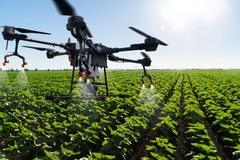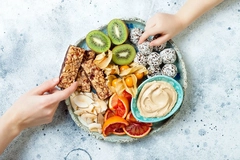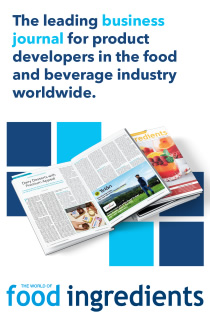“The next wave” in dairy innovation: Roquette discusses texture R&D, smart reformulation and AI

Dairy innovation is undergoing a fundamental recalibration globally as brands respond to increasingly complex consumer expectations. Plant-based buyers prioritize flavor experimentation, while manufacturers face the pressure to “milk more from less” — delivering better nutrition, cleaner labels, and improved sustainability without compromising taste or texture.
Sandrine Bouvier, customer marketing manager at Roquette, says the market is no longer segmented into silos of health, indulgence, sustainability, or convenience. Today, successful innovation must deliver on all fronts simultaneously.
“Plant-based alternatives are at the forefront of this evolution, driven by consumers looking for products that are nutritionally meaningful, environmentally responsible, and enjoyable to consume. Yet, these alternatives are expected to perform like their traditional dairy counterparts, especially in terms of texture, mouthfeel, and taste,” she tells Food Ingredients First.
She points to a perception gap manufacturers must bridge. “Surveys reveal that 30% of consumers find plant-based performance drinks unsatisfactory in texture, with 10% citing insufficient creaminess and 9% encountering gritty textures.”
“This presents both a challenge and an opportunity for formulators to create non-dairy options that satisfy the emotional and sensory expectations long associated with dairy.”
Snack culture crossover
Besides the persisting focus on taste, Bouvier also observes the plant-based space becoming “more expressive and playful.”
“The rise of Gen Z influence is bringing flavor experimentation and crossover with snack culture into the dairy space. Many newer products are mimicking the indulgence cues of junk food while being anchored in health-forward claims.”
 Reformulating to reduce sugar and increase protein can affect the product’s sensory qualities, says Bouvier.Consumers are not just buying plant-based because it’s “better” but because it’s “fun, delicious, and aspirational,” she notes. They are also scrutinizing ingredient lists more closely, prompting manufacturers to simplify formulations and “eliminate unnecessary additives.”
Reformulating to reduce sugar and increase protein can affect the product’s sensory qualities, says Bouvier.Consumers are not just buying plant-based because it’s “better” but because it’s “fun, delicious, and aspirational,” she notes. They are also scrutinizing ingredient lists more closely, prompting manufacturers to simplify formulations and “eliminate unnecessary additives.”
Convenience is another critical driver, especially for time-pressed consumers whose lifestyles require ready-to-use, nutritionally balanced solutions.
However, she believes this is becoming more nuanced, as they increasingly seek compact, easily consumable, clean label formats that are “nutritionally rich, portion-controlled, and sensorially satisfying.”
Reformulation challenges
As dairy innovations gain ground, manufacturers face the challenges of reformulating with reduced sugar, increased protein, or improved Nutri-Score readings. The process often impacts the sensory qualities consumers expect, Bouvier highlights.
“The challenge intensifies when incorporating plant-based ingredients, as replicating the creamy mouthfeel and flavor of dairy demands entirely new formulation approaches.”
To address these issues, manufacturers are turning to advanced, purpose-designed ingredients, such as soluble fibers, that offer the dual benefit of enabling sugar reduction while supporting fiber and prebiotic enrichment.
For instance, Roquette’s sugar-free Nutriose soluble dietary fiber supports digestive health. “Its neutral taste and excellent solubility mean it integrates easily into dairy and plant-based matrices without affecting sensory appeal,” notes Bouvier.
Balancing protein and clean label expectations
As protein-rich claims continue to lead global dairy launches, Roquette is tapping pea and fava bean proteins to meet consumer expectations. The company is targeting better solubility and improved taste that helps replicate dairy-like qualities, Bouviers tells us.
Roquette has developed its Nutralys Pea S854F high-viscosity pea protein isolate with 85% protein for smooth mouthfeel and creamy texture that consumers associate with indulgent dairy products.
 Plant proteins like fava offer high protein and dairy-like appeal (Image credit: Roquette).“With a non-GMO crop origin, it’s manufactured in Europe through a solvent-free, water-based process — attributes that align with clean label and sustainability standards.”
Plant proteins like fava offer high protein and dairy-like appeal (Image credit: Roquette).“With a non-GMO crop origin, it’s manufactured in Europe through a solvent-free, water-based process — attributes that align with clean label and sustainability standards.”
Additionally, Roquette’s Nutralys Fava S900M provides 90% protein, has a neutral taste, and light color. It is marketed as a versatile solution across formats, “especially where high protein is needed with minimal usage.”
“Critically, the fava bean crop is part of the pulse family and considered a highly sustainable raw material. Like peas, they offer agronomic advantages including natural nitrogen-fixing capacity, reducing the need for fertilizers.”
Functionally, the ingredient offers high gel strength, viscosity control, and stability under varying conditions. Formulators can use it in ready-to-drink beverages and plant-based yogurts, where formulation flexibility is essential.
“Reshaping” R&D with AI
Roquette is tapping digital innovation in how its ingredients are designed and commercialized, with artificial intelligence “reshaping our approach to R&D by unlocking a new level of personalization and precision,” says Bouvier.
“We use AI to develop detailed food personas — data-driven profiles that reflect evolving consumer expectations around health, nutrition, taste, and sustainability.” However, human expertise remains critical in this process.
“Our marketing and technical teams guide AI through structured briefs and iterative feedback, ensuring every concept is relevant and compelling.”
“Beyond concept development, AI is enhancing how we formulate. It helps us analyze vast sets of technical and sensory data, uncovering connections that inform ingredient combinations, texture targets, and nutrient delivery,” she explains.
This supports the team in refining product designs faster and more accurately, reducing development cycles, and improving formulation efficiency without compromising quality.
 Future dairy is expected to be smarter: compact, nutrient-dense, and gut-friendly by design.
Future dairy is expected to be smarter: compact, nutrient-dense, and gut-friendly by design.
A smarter, science-based future
Bouvier expects the future of dairy, whether animal- or plant-based, to be driven by a far more “intentional and science-informed” approach to nutrition.
“One of the clearest catalysts for this change is the rise of GLP-1 medications. The global GLP-1 market is projected to grow from US$49.3 billion in 2025 to US$157.5 billion by 2035 (CAGR 11.1%).”
“While often framed as a trend, GLP-1s are better understood as a flashpoint — accelerating dietary changes already underway and pushing them firmly into the mainstream.”
Concerns like appetite regulation, portion awareness, digestive comfort, and nutrient optimization are becoming the new normal. As consumers increasingly eat less per sitting, fewer calories need to have higher concentrations of protein, fiber, and essential micronutrients.
“As gastric emptying slows, tolerance and gut health are under greater scrutiny. Prebiotics, soluble fibers, and gentle, carefully selected plant proteins will play a critical role in ensuring nutritional density is delivered without discomfort.”
“Ultimately, the next wave of dairy innovation will be defined by its ability to meet these emerging demands through smarter, more purposeful formulation — where health, simplicity, and performance converge,” she concludes.

















